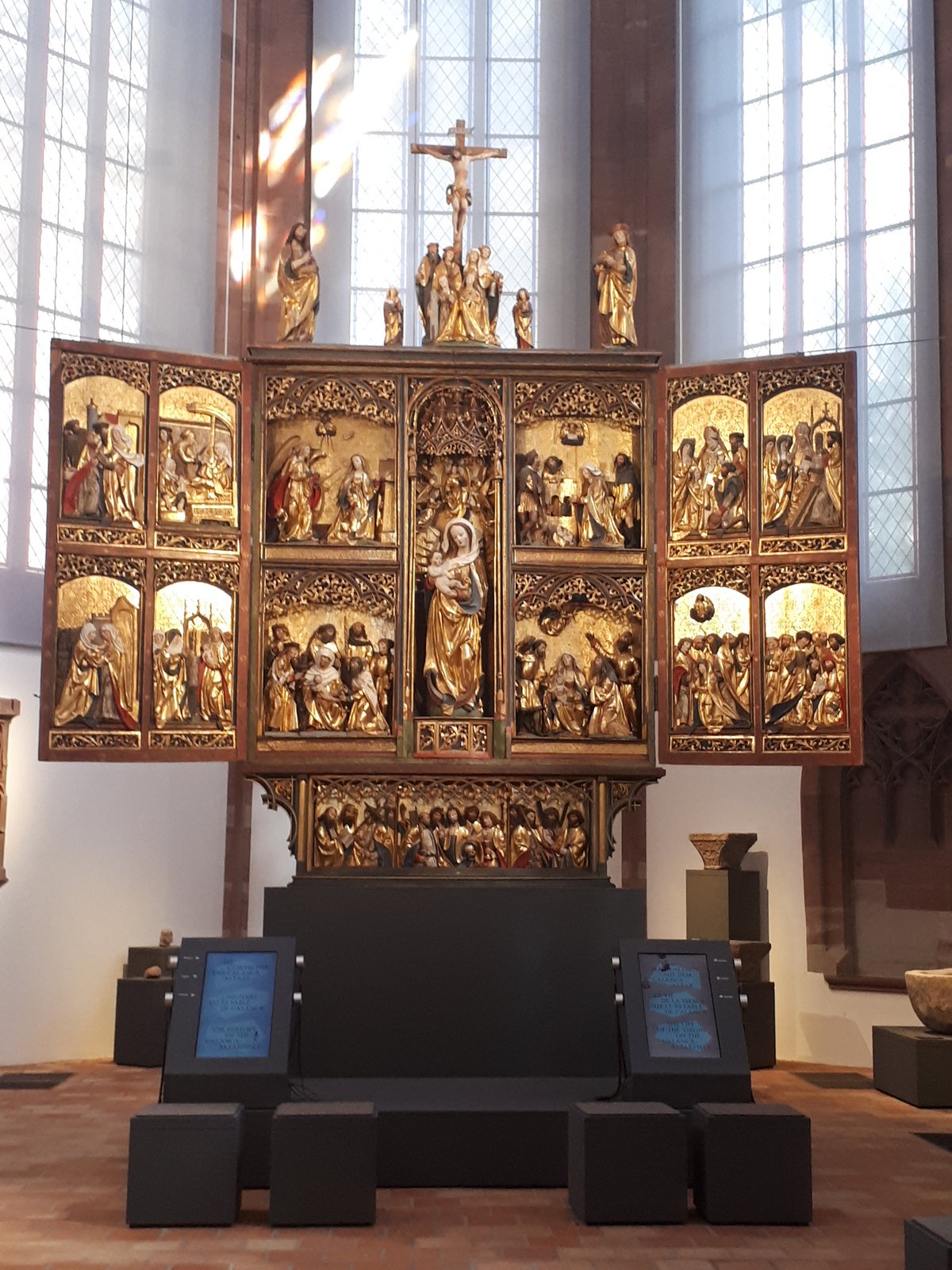Lisa Braun
Ivo Strigel and the Grisons - Export as a workshop strategy

Lisa Braun‘s dissertation project 'Ivo Strigel and the Grisons - Export as a workshop strategy' will focus on winged and carved altarpieces of the Gothic period that were manufactured by the Strigel-workshop located in Memmingen in Southern Germany. Within the last decades and in more recent years a number of projects concerning altarpieces and their iconography have been realized. Unfortunately, the questions directed at those heterogeneous artefacts, that were crafted and built by various people and with varying techniques, didn’t evolve much. Marius Rimmele’s dissertation is an example for a different approach, in which he concentrates on the semantics of image carriers and their material and technical constitution. The dissertation project at hand seeks to shed light on the workshop of the Strigel family in Memmingen, which were excellent in the production and transportation of winged, gothic altarpieces, especially to the nowadays swiss area ‚Grisons‘. Lisa Braun wants to discuss how the altarpieces were built in the workshop, who was building them and how they made it possible to transport the artwork on donkey’s backs to the small mountain villages in Grisons. Furthermore, she aspires to demonstrate, that the carved altarpieces of the Gothic period hold an intrinsic potential to embody or incarnate within their own corpus. She intends to exhibit, that the way the sculptures and reliefs of carved altarpieces are coloured supports this symbolic embodiment and that the process of becoming a ‚body‘ is being negotiated between the object and the body of the person looking at it. In opening and closing the wings of these altarpieces the intrinsic process of embodiment becomes evident as the flat paintings reveal the reliefs, which in turn lead up to the sculptures and bodies in the heart of the artefact. Besides this rather evident plastic embodiment, on a more metaphoric level even the altarpiece itself becomes a kind of corpus, similar maybe to the body of Mary, in which a symbolic incarnation takes place. The question is, how the altar’s colours play into this process, because not only are they lending wood the semblance of flesh, they also accord with the meaning of special woods, as described in the recent publications of Christina Neilson. With the chosen example of this project, the altarpiece of Sta. Maria Assunta di Calanca in Grisons in Switzerland, dated 1512, the various connotations with incarnation and embodiment appear in a particular form. An inscription on the back of this piece states, that this machina was built by one Ivo Strigel. The meaning of the Latin word machina seems to describe both the construction of the altarpiece and its function as a mechanical apparatus, but it even leads to the mechanical conception of the human body, that is shown in anatomic studies of this time.
Personal Data
From 2012 until 2018 Lisa Braun studied art-, literature- and media studies at the University of Konstanz. In her Bachelor’s thesis she focussed on the conception of sacred places through architecture and painting in northern Italy’s Duecento. Her interest in the Sacred Art of the Middle Ages slowly but steady grew into her main research focus. In her Master’s thesis Lisa Braun tried to locate the workshop of three wooden relief pieces, which at that point had been examined by conservators at the Staatliche Akademie der Bildenden Künste in Stuttgart. That is where her interest for an interdisciplinary approach on artworks started. In her current PhD project ‚Wood and Colour – Embodiment in the carved and winged altarpieces of Southern Germany‘ she again combines the two disciplines of conservation and art studies. Furthermore she wants to shed light on the workshop of the Strigel family in Memmingen, which were excellent in the production and transportation of winged, gothic altarpieces, especially to the nowadays swiss area ‚Grisons‘.
| Supervisory Team | |
|---|---|
| Primary Supervisor | Prof. Volker Schaible, ABK Stuttgart |
| Secondary Supervisor | Prof. Dr. Steffen Bogen, Uni Konstanz |
| Mentors | Dr. Georg Habenicht |
| Dr. Anna Moraht-Fromm, Kultur- und Bildwissenschaft – Sachverständige, Berlin | |
| Project Partners | Landesamt für Denkmalpflege Baden-Württemberg |
| Dr. Anna Moraht-Fromm: Project „Corpus Strigel - 100 Jahre“ - Online Database |
